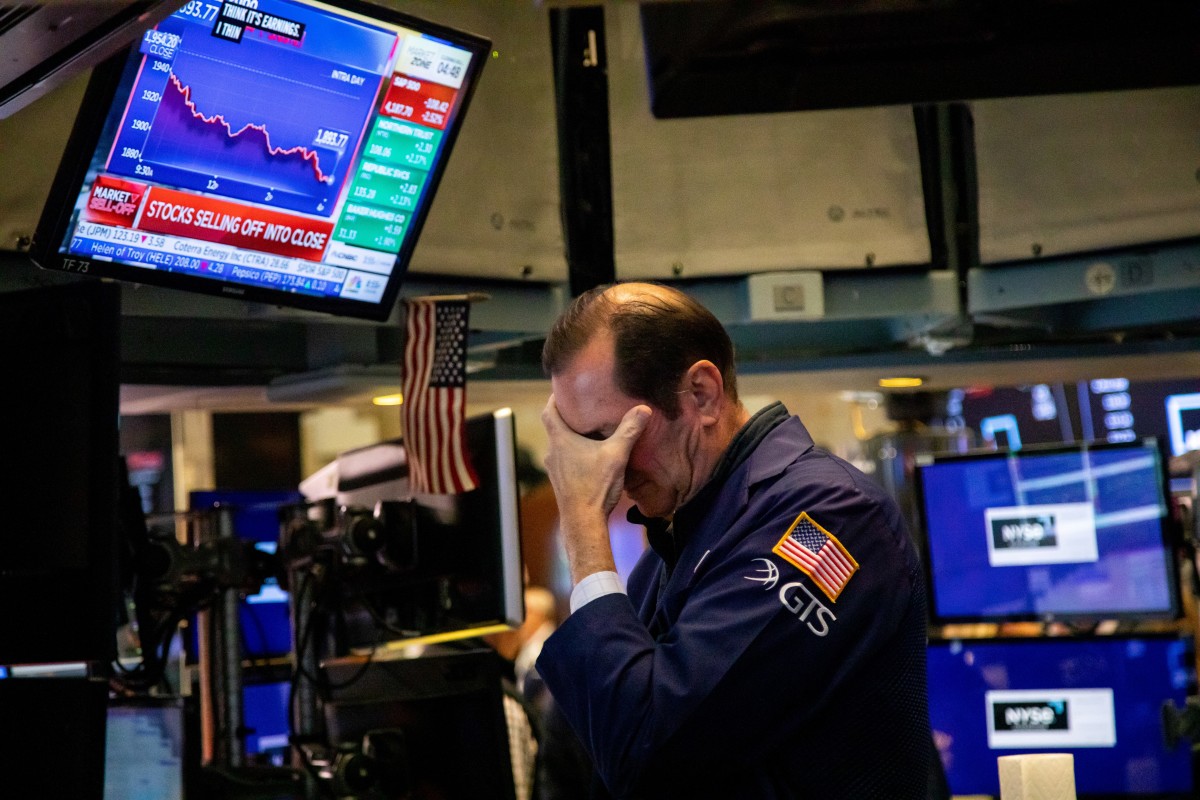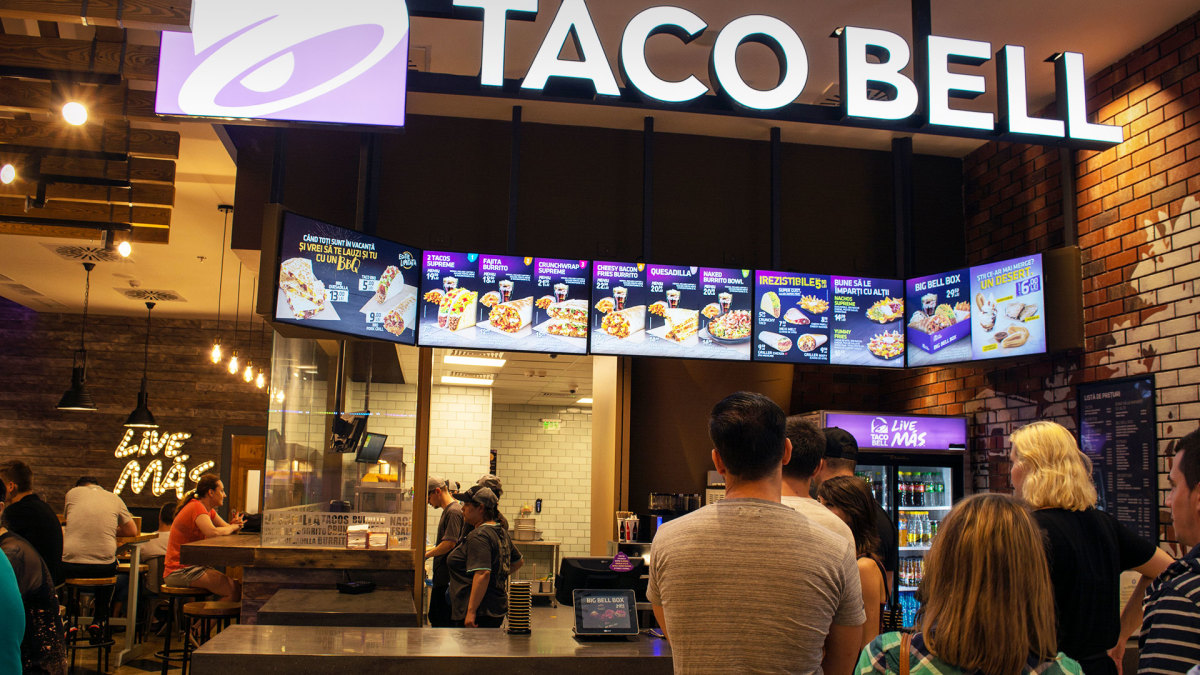Where the stock market is headed next
Stocks are at highs, but uncertainty around tariffs, earnings, and AI could shake things up. Here’s what investors need to know.

Transcript:
Caroline Woods: Art Hogan, Chief Market Strategist at B Riley Wealth Management. Art always great to have you. Thanks so much for being here.
Art Hogan: Thanks so much for having me. It's great to see you.
Caroline Woods: So art stocks are back in negative territory after yesterday's rebound. Do you look at this weakness as just a temporary shakeout or is this a bigger shift. What do you think?
Art Hogan: Well, a couple of things it's important to remember. We're coming into this week at or near all time highs with a multitude of catalysts that you could perceive as being either positive or negative. And I think markets are just trying to figure that out. So I would say this is a bit of that sort of entering the month of November, a little concerned about the fact that we have a record setting government shutdown, a little bit concerned that the Supreme Court could really tip over the apple cart on trade and tariffs, and certainly at the end of what has been a very good earnings reporting season, but one where stocks that were doing really well coming into it weren't able to react in a positive way, even though they beat, the top and bottom line and raised guidance. So a lot of examples of that. So I think we're just at this point now where we have to say to ourselves, can we offset the potential tailwind of the government reopening with a potential headwind of a lot of confusion that will happen when the Supreme Court likely says that the use of emergency Powers Act is not constitutional for the way the administration levied these tariffs.
Caroline Woods: OK so let's dig into that a little bit. You think the Supreme Court will vote against President Trump in terms of those tariffs. And what would that actually mean for the market. Because I could understand that there would be some companies that would benefit if they don't have to pay those tariffs or if they get paid back. But overall, given the fact that the market is at all time highs, despite those tariffs, what would it mean for the market's direction?
Art Hogan: Yeah, a lot to unpack there. And I would tell you this, first and foremost, it's going to add a lot of confusion, right. So remember, when the terrorists were first announced on April 2 And how much confusion. There was in the market when the liberation day rollout was so chaotic and the markets eventually bottomed on April 8, when everyone was given an extension of period of time to negotiate trade deals. Well, in between then and now, we really haven't signed very many trade deals and certainly not with our top trade Partners. We don't have a trade agreement with China, Canada, and Mexico, three of our top four trade Partners. So in and of itself, we're still living in the land of uncertainty around trade. And now throw into that the fact that along the way, the government's collected a couple billion in trade revenues, that they will likely have to give back. Most, if not all of. So the Treasury will have to find a couple billion and be who exactly are they going to pay back. And to the extent that there's some obvious winners in the short term on being paid back, companies like Amazon that pay a lot of tariffs, all the furniture companies and all the, you know, sort of typical candidates that have been paying a lot of tariffs along the way. But the problem is then the administration has to quickly transition to plan B, and plan B is a couple of different options that the president could use, but neither one of those really has the kind of flexibility that the emergency Power Act. Meaning there's limits to how much can be tariff. And the largest of that would be the 15% maximum on one of the statutes. And then there's a time frame. They have to be temporary. So that's going to add a lot of confusion into where we stand and what the rules of the road are in this trade war highway. So not that it's necessarily going to be a distinct positive or a distinct negative. It's going to add a lot of confusion trying to figure out just how this gets unwound and then wound back up. And it extends the period of time where we don't know exactly what the average tariff is going to be on an imported good. But this is a market that's done pretty well despite a lot of confusion and uncertainty.
Caroline Woods: But given that know, we are near all time high. So how are you looking at valuations at this stage. Can you say that they're justified. And this is a market that can ultimately head higher?
Art Hogan: Yeah valuations are difficult to justify in a broader sense. The valuations are higher than the historic averages. The problem with the historic averages is we didn't have companies like the mag seven or the top 10 mega-cap technology stocks that are throwing off gross margins that are all North of 50% and growing their earnings and revenues North of 50% as well. So when you take that portion of the S&P 500 and extract that out and say, of course they're trading at higher multiples, the average multiple for the top 10 mega-caps is about 35. And I think that's rational, right? I think when you back that out and say, what are the other 490 stocks in the S&P 500 trade at about 18.5 times about average. So I'm not that concerned necessarily about the overall valuation. But what was interesting was as soon as we got to 23 times forward multiple on SB 500, the market hit a ceiling. And that's happened every time we bumped up against that. So there seems to be some resistance North of 23 times. The good news is, when NVIDIA reports on November 19, the multiple is going to go down for the S&P 500 because it's the largest stock in the index. And its multiple always comes down because it always raises its guidance. And it's a cycle. We go through every quarter where everyone starts to fret after the earnings season. And then Nvidia comes in and reminds us that all of this will likely be OK.
Caroline Woods: OK so do you expect that stocks will continue to cool off. And if so, what becomes the next leadership group in the market?
Art Hogan: Yeah, it's going to be hard for the stocks to cool off a lot, but they certainly have taken a lot off the top. And over the course of the last two weeks, the valuation drawdowns for the major I darlings has been significant. And I think it's probably a much more appropriate level. So especially for some of the newcomers. Oracle's a new AI Darling, and that is certainly come down quite a bit from its peak. I would also offer up that Broadcom, one of the new entrants to the top 10 AI darlings has given back some of its gains. So I think there's been a rationalization of those valuations, but I think I continues to be leadership. That said, I also think it's important to take a step back and look at the breakdown of the earnings reporting season and note that 6 of the 11 S&P 500 sectors actually had a percentage of earnings growth that was actually higher than tech and communication services, where that mag seven lives. So we're really starting to see participation from the rest. And I think that's important and a broadening out sense of this market. So the other 490 and certainly in certain sectors are starting to pull their weight in terms of earnings growth. And when we look at the earnings reporting season, we're likely going to land in low double digits from a consensus that was about 6% or 7% Earnings growth. And estimates for the fourth quarter have gone up. And estimates for next year set at about 13% So on an earnings related basis, earnings growth continues to be a driver. And I certainly think we are. We're sitting at a place where the market can continue to follow the path of earnings, and hopefully we get some of the other noise around the edges, like a government shutdown and where we land on trade and tariffs behind us and start focusing on the fundamentals.
Caroline Woods: So given all of that, where do you want to put money to work right now. If someone has cash on the sidelines, what's the most reasonable way to put it to work. Where should they put it?
Art Hogan: Well, three things. I think you want to have exposure, but I think you want to have market exposure to the artificial intelligence revolution. So that means you don't have to overweight technology. You can have a balanced approach to that. I think that makes a great deal of sense. And then on the other side of that, I would balance that off with exposure to things that are actually going to do well because of artificial intelligence. So things like industrials, things like utilities. And I would also look at things that will do well in an environment where we have less regulation. So things like financials. So if you just take that bucket and say we're going to have industrials utilities and financials on one side. And we're going to have some artificial intelligence darlings on the other side and then try to keep that balanced. Don't get overweight. The technology stocks or the AI darlings. And when you do sell that down and put that money in the other buckets with the AI adjacents and the deregulation play with the financials. So I think that's a great way to run a portfolio. You want to probably rebalance once a quarter, twice a year, whatever you're comfortable with. Then you don't get overexposed to the high beta of artificial intelligence. And you have diversification in those other sectors.
Caroline Woods: One thing just quickly. That's not doing well, especially because of earnings, is that some restaurant stocks or stocks linked to the consumer COVID, Chipotle both called out that younger customers are eating out less. I'm seeing DoorDash sell off in a big way today following earnings. Is that a dip that you would be interested in buying. Or how concerned are you about the state of consumer, given some of this evidence that we're seeing from these names?
Art Hogan: Yeah interesting. It's a real demonstration of the k-shaped economy that we have right now. And that just basically means that while the economy is doing OK, it's doing much better for the upper end than it is for the lower end. There's a lot of reasons. The younger generation is finding it difficult to go out to restaurants as much as they used to. One of those is the student loans have to be repaid. Now Unemployment rates for that cohort are twice the rate of unemployment for the entire population. And certainly the difficulty now to find a job as a recent college grad, because of the slow to hire, slow to fire corporate America that we live in right now. So I would say that there will come a point where that all of those things will rectify themselves, but not right now. So I certainly think that consumer discretionary space, especially as it pertains to restaurants, likely remains under pressure. There will be an opportunity, but not until we clear up some of the reasons behind the slowness of the consumer, especially in that younger demographic that 18 to 25-year-old.
Caroline Woods: OK, we'll leave it there. Always appreciate your insights. Thanks so much.
Art Hogan: Thank you.
What's Your Reaction?





















































